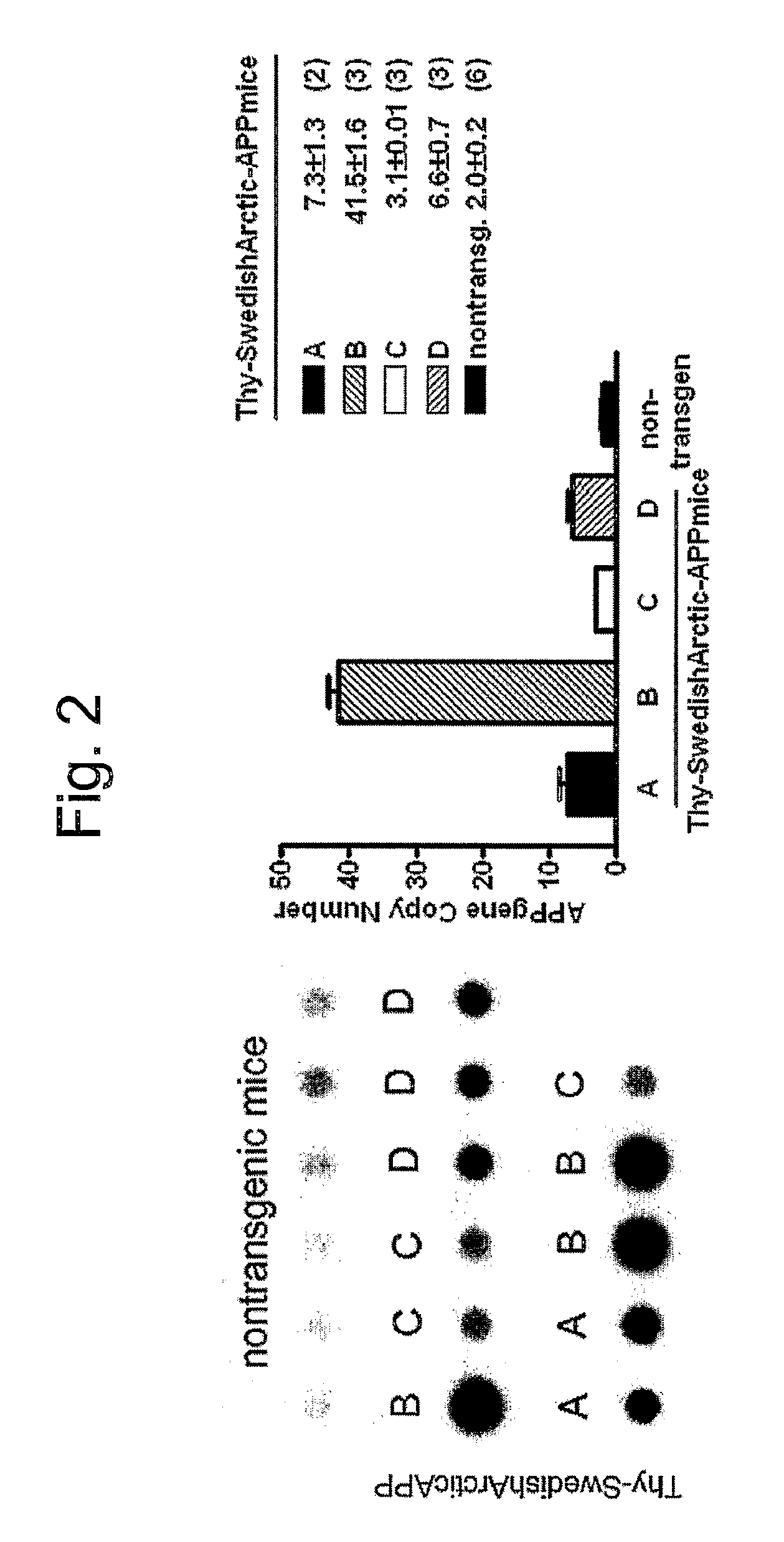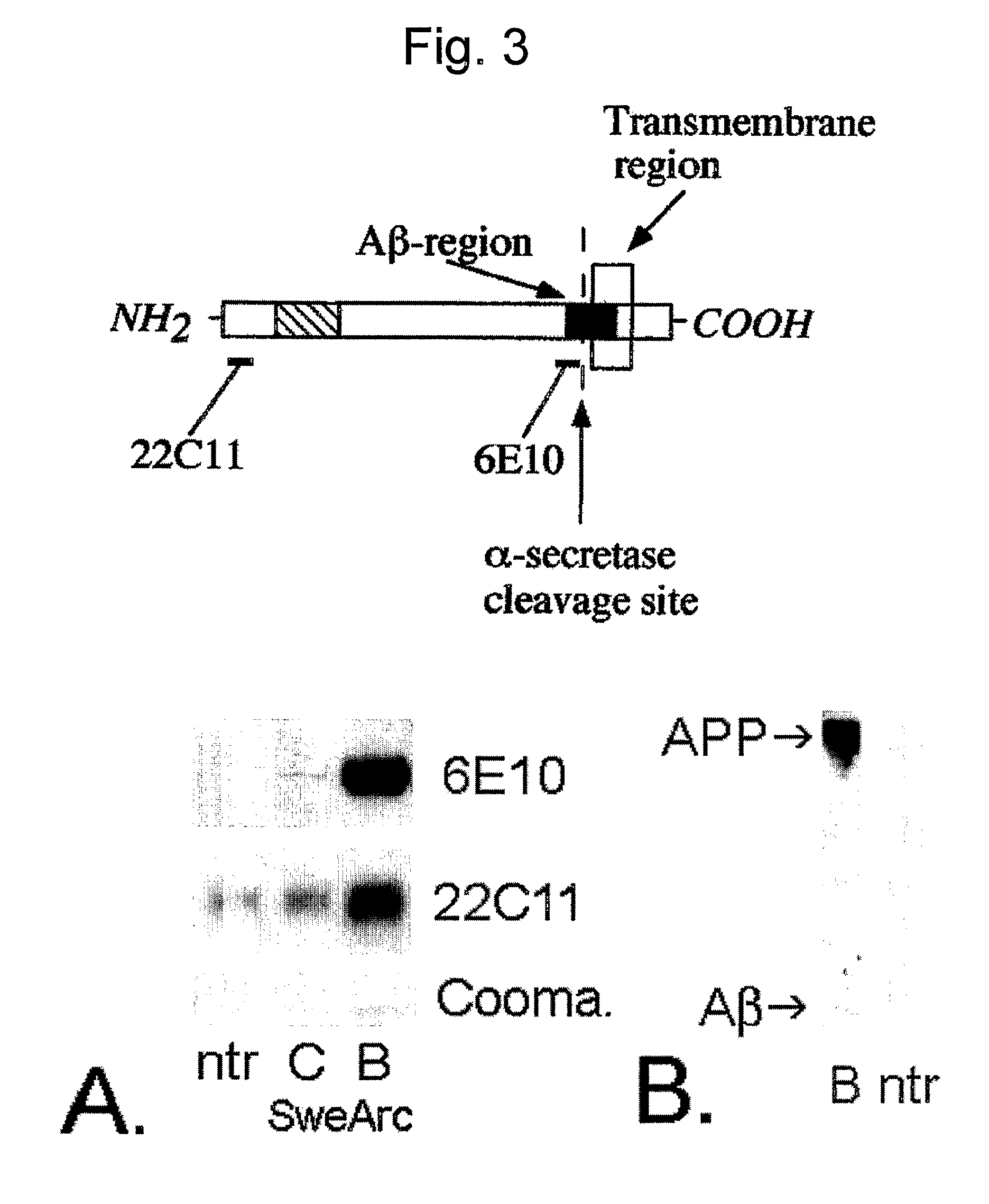Transgenic mouse expressing arctic mutation E693G
a technology of arctic mutation and mouse, applied in the field of transgenic animals with alzheimer's disease, can solve the problems of dementia, functional loss in patients with ad, and no protein has been proven to be involved, and achieve the effect of rapid and cost-efficient screening of pharmacological agents
- Summary
- Abstract
- Description
- Claims
- Application Information
AI Technical Summary
Benefits of technology
Problems solved by technology
Method used
Image
Examples
examples
General Methods
[0057]Standard molecular biology techniques known in the art and not specifically described were generally followed as in Sambrook et al., Molecular Cloning: A Laboratory Manual, Cold Springs Harbor Laboratory, New York (1989, 1992), and in Ausubel et al., Current Protocols in Molecular Biology, John Wiley and Sons, Baltimore, Md. (1989). Standard transgenic techniques for introduction of a foreign gene into fertilized eggs from mouse known in the art and not specifically described were generally followed as in Nagy et al., Manipulating the Mouse Embryo: A laboratory manual, Cold Springs Harbor Laboratory, New York (1986, 1994, 2002), ISBN 0-87969-574-9. (FIGS. 1 and 2). General methods in immunohistochemistry: Standard methods known in the art and not specifically described were generally followed as in Stites et al. (eds), Basic and Clinical Immunology (8th Edition), Appleton & Lange, Norwalk, Conn. (1994) and Johnstone & Thorpe, Immunochemistry in Practice, Blackwe...
PUM
| Property | Measurement | Unit |
|---|---|---|
| brain weight | aaaaa | aaaaa |
| pH | aaaaa | aaaaa |
| structure | aaaaa | aaaaa |
Abstract
Description
Claims
Application Information
 Login to View More
Login to View More - R&D
- Intellectual Property
- Life Sciences
- Materials
- Tech Scout
- Unparalleled Data Quality
- Higher Quality Content
- 60% Fewer Hallucinations
Browse by: Latest US Patents, China's latest patents, Technical Efficacy Thesaurus, Application Domain, Technology Topic, Popular Technical Reports.
© 2025 PatSnap. All rights reserved.Legal|Privacy policy|Modern Slavery Act Transparency Statement|Sitemap|About US| Contact US: help@patsnap.com



